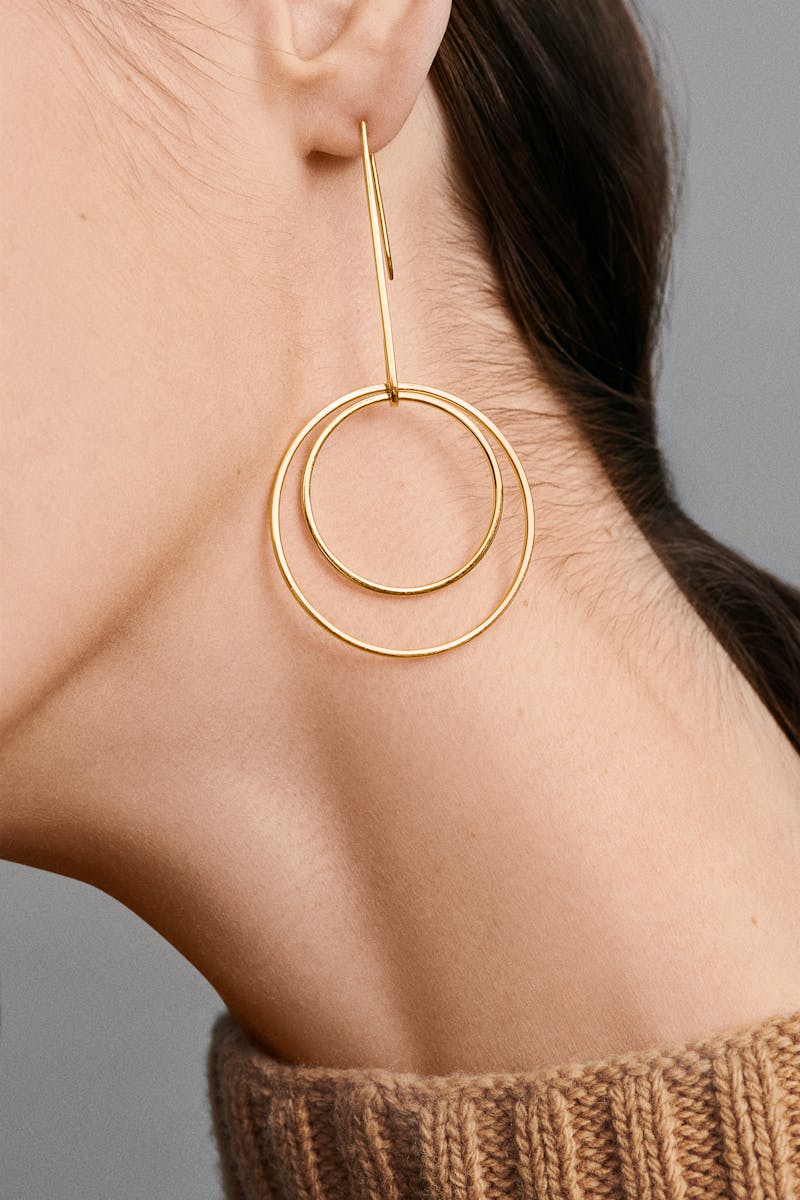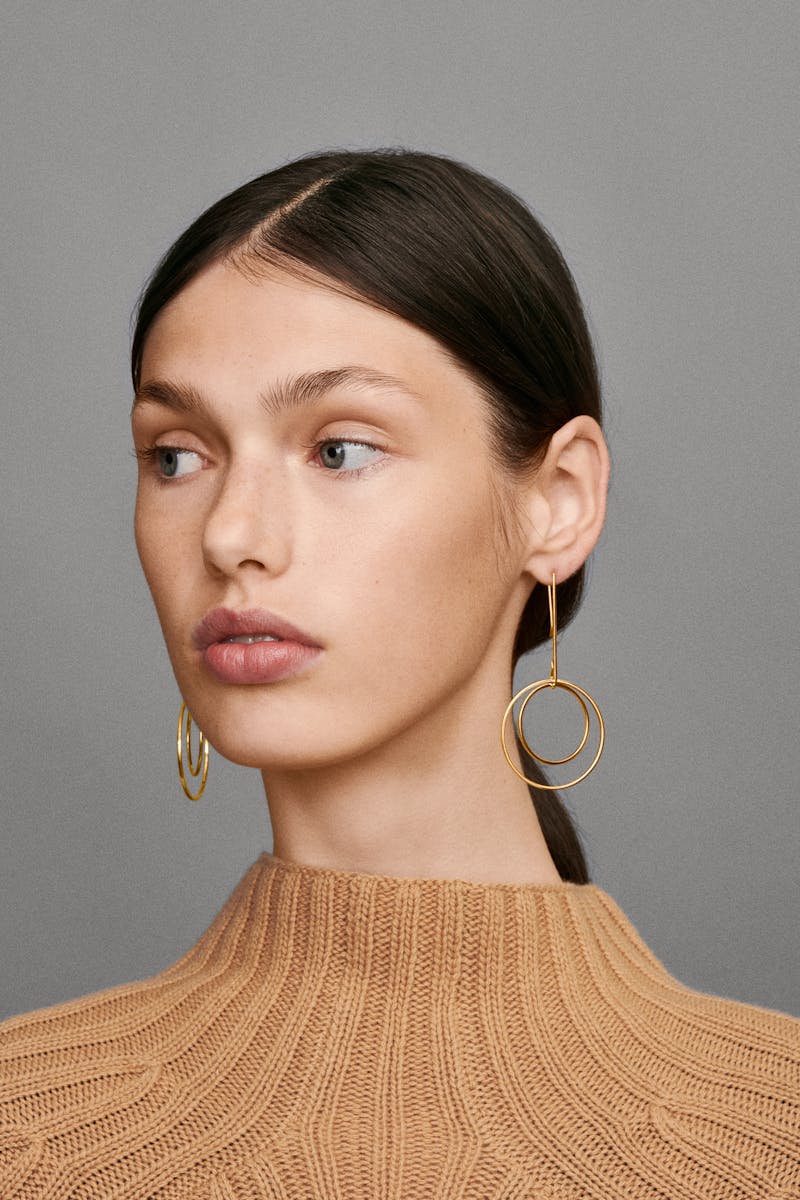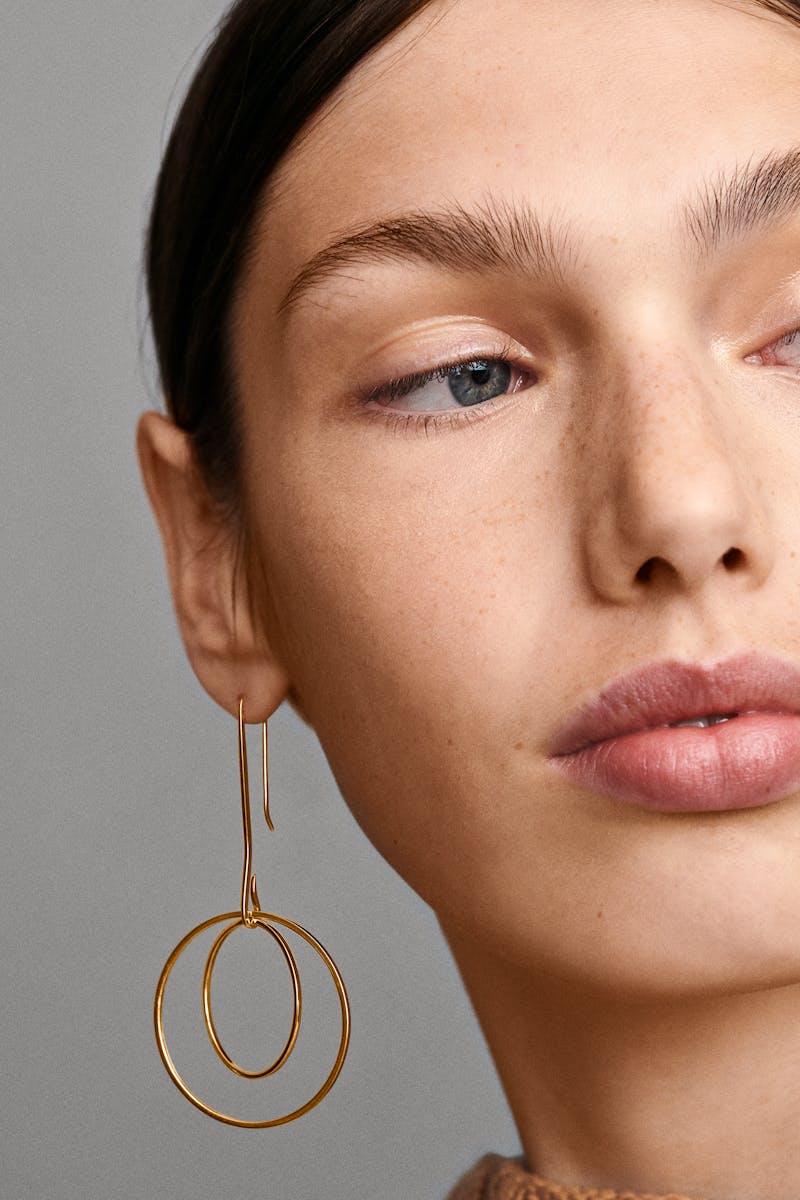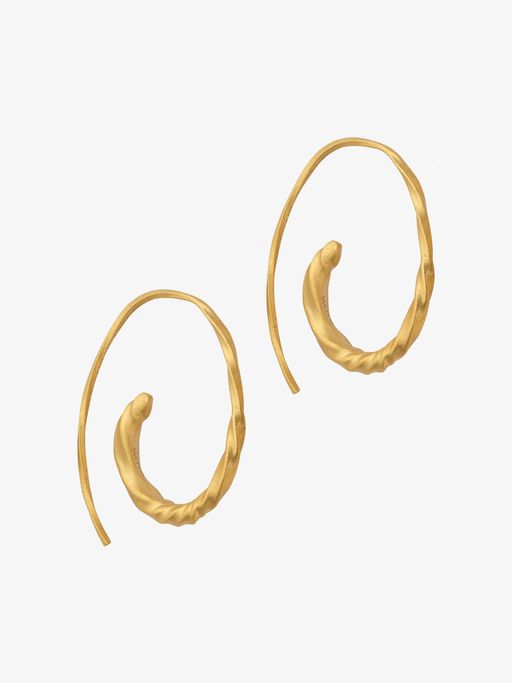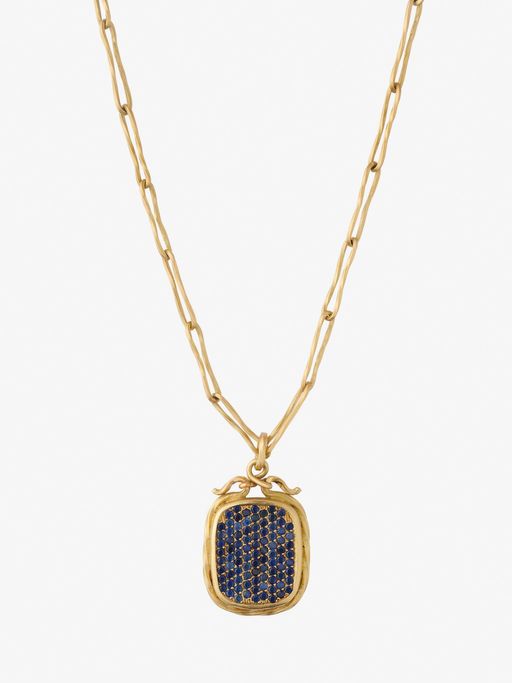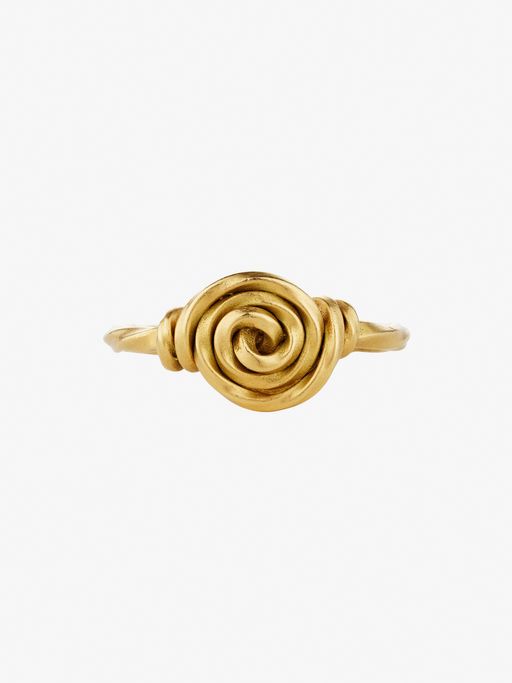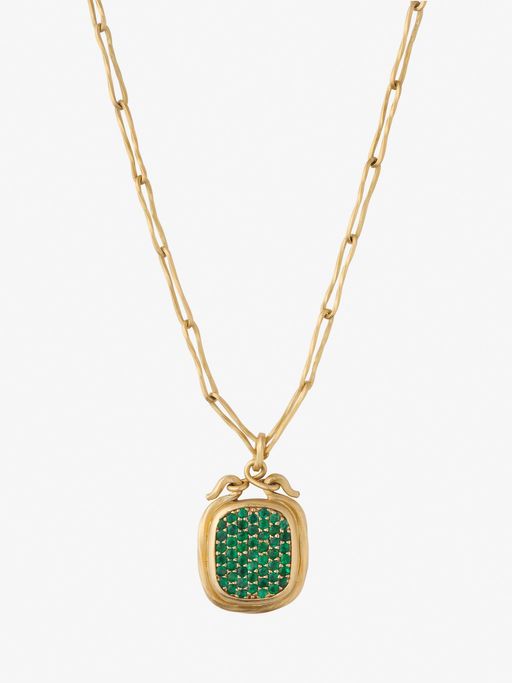Marlene Juhl Jørgesen

A gifted craftsman and an innovative designer, Marlene Juhl Jørgensen has been in the industry for 30 years
Spanning almost three decades, Marlene Juhl Jørgensen’s career has taken her across the globe. A pioneer in Danish jewellery-making, she merged the Nordic tradition of conservative craftsmanship with ancient
techniques and changed the way we think jewellery. Now, more than ever, she focuses on her passion projects; from creating the ultimate chain to working day and night on a special project with the Red Cross.
You’ve been in the industry 30 years now, how did you end up a jewellery designer?
It’s quite early that I realize what I want to do in life. My mom has always had an interest in jewellery and would always have it custom-made. I remember how she once gifted us children a razor blade in silver and had one made in gold for herself. She was very modern and ahead of her time. It formed my interest in jewellery. I discovered designers like Gerda Lynggaard, Guld & Gummi, Birthe Steenbach and Torben Hardenberg who did untraditional jewellery. It took on a different life and became something more than pearls and eternity rings. It was a different approach and it opened my eyes to how you could work with unconventional materials like amber and rubber. It was an inspiration in the way that I started thinking about ways that I could redefine this universe and decide what it was supposed to look like.
With whom did you do your apprenticeship?
With Vagn Drachmann. It was an amazing place. It was great, not in a cool way, but in a tough way. It really was incredible. Then, when I finished, I went to New York to study at Parsons. But I felt like I knew everything they had to offer already; they didn’t have a Master’s in jewellery. Instead, I started a Master’s in Fine Arts. I had always known that I had to travel and try new things. Had I just started on my own immediately after my apprenticeship, I am not sure I would have found my own style.
I read somewhere that your adventures are the source of inspiration for you. Which is evident in your creations. Especially for that time; your style was very distinctive.
People would not believe that I had lived in New York for four years. They thought I had spent four years in India. In New York though, I end up at this other school; a tiny place. It took me some time to find it, actually. I was aware that there was a school somewhere teaching a technique that I didn’t already know. And when I find it, and they accept me, I experience this gold rush. I would eat oatmeal to be able to afford more gold. I couldn’t help myself. I came with a traditional Danish background; it is a conservative, strict and Nordic education. This new school taught ancient Greek techniques. It was much more romantic with lots of small granulations. Like being an impressionist. You have the same school of thought, and the artists have the same style without copying each other. I came with my Danish background, and when I merged the two, I created my own style.
This story shows how craftsmanship is key in that you do.
It’s what I do. I know so much about craftsmanship. I have worked with it from the very beginning. I know it sounds pretentious, but it’s not meant that way, I just know almost everything there is to know by now.
"I have to take responsibility and help impact the world in a positive way. You have to start with yourself."
When it comes to your design, has it changed over the last 30 years? It’s obvious that you have your own style, but it would still be interesting to hear from your own point of view.
Many of the pieces that I make today, I’ve made since the beginning. I introduced a lot of new things when I started out. At the time, when I did my first exhibition in Denmark, people only worked with white pearls, rubies, emeralds and a lot of white gold. No one would use colored tourmalines; they didn’t use beads; stones made like pearls with a whole in them so you could string them. No one used blue pearls. Then, I make this exhibition, with large pearls crosses, attached stones, granulations and S-locks. I’ve never purchased a pre-made lock. People here had never seen an S-lock. Everything was very different from what people were used to. And it sold out within two hours, and I had a lot of orders. I hired two assistants to help me. It was unconventional materials; antique cut diamonds bought at auctions. For many people, it was a new world.
Where does this innovative streak come from?
It was from the merge of techniques. I modernized it, so it wouldn’t look like something from a museum store.
Taking old techniques and modernizing. It’s about craftsmanship and design. How has the industry changed over the last 30 years?
When I opened my store, people were used to these very classic goldsmith stores. I wanted to build a universe that spoke to my pieces. It was meant to feel more like a gallery. Pretty much everything in here was custom-made for the store. I didn’t put price tags on my things. I had a lock and bell on the door. The wrapping was new. My jewellery didn’t come in these plastic boxes that people were used to. I wanted everything to be an experience. Today, everyone is doing it, it’s not a new thing anymore, but it was back then. I had a ribbon made out of cotton with my name on it, and people would keep it. They would put my postcards on their fridge. It was a universe.
That has been one of your major accomplishments, creating a universe.
Yes, and now it’s considered mainstream. But it wasn’t back then, not at all.
What’s the most essential to you in creating jewellery?
It’s always been very intuitive, and I’ve had a very organic way of working. With the more commercial collections, which I did a trilogy of, it was more specific. They were all inspired by different journeys. When I returned from my travels, I had to use it somehow. They are very specific and distinct and came at a different price point. Which was great and all. But then it became too specific. I have always dreamed about making the ideal chain. I decided that the time was now. That’s how the Flow-collection was born, with the chain as a starting point.
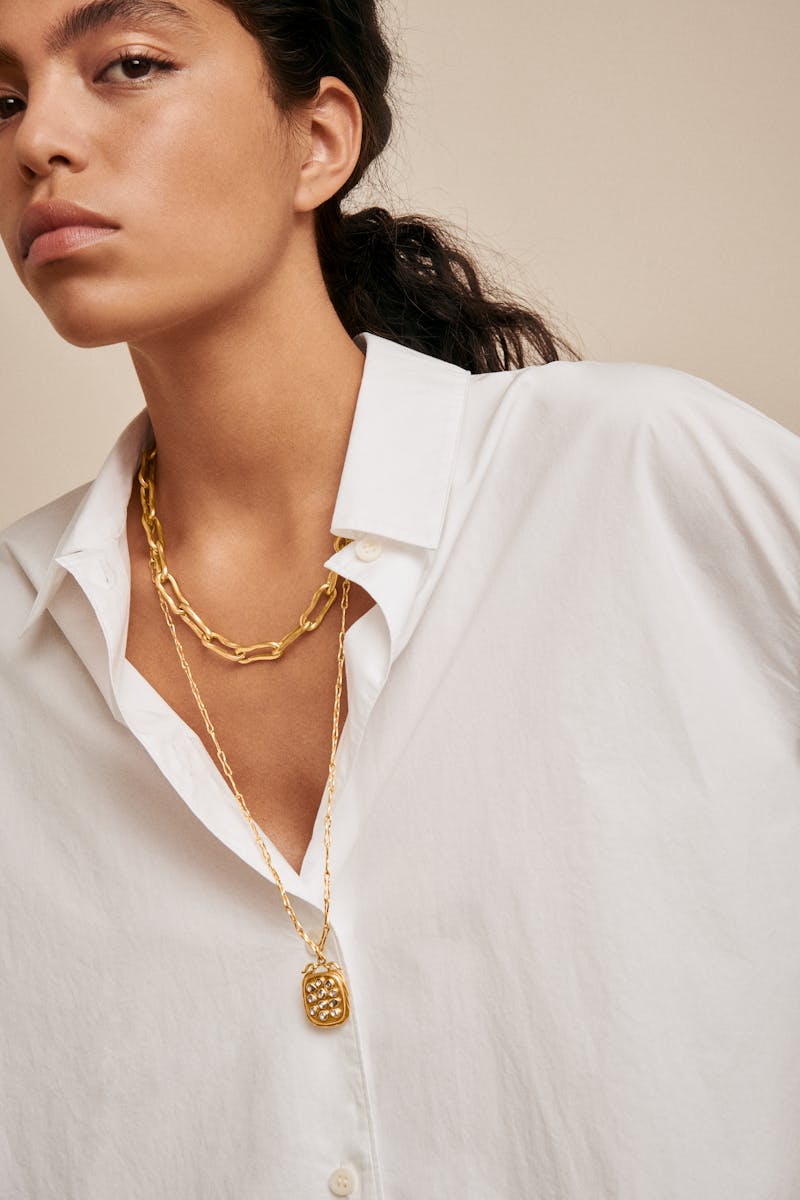
Sounds like inspiration can be very specific, and very research-based, developing over long periods of time?
Indeed. The first one is a conversation spanning twenty minutes from which a full collection was born.
And Flow has developed over years from this idea of creating the ultimate chain… You mentioned the fashion industry yourself, and you’ve worked with different brands before?
It started when Day Birger et Mikkelsen asked me to do their accessories. I then co-founded a brand called Noir. And it was called Illuminati too. It was black and it was white. And Illuminati was a foundation making sustainable cotton in mid-Africa; it was supposed to help change the cotton-production in that area. We wanted the farmers to own the production and we would purchase it directly from them. We had to market it and we had to promote it all over the world. Which is why we created this very expensive and very sexy brand, with the cotton as our most important cause. It’s always been important to me to do these kinds of things, which is why I am now collaborating with the Red Cross on silver bracelets.
Let’s talk a bit about that project and its relation to the times that we live in.
If Noir would have been a success, and we would have accomplished what we set out to do. We would have created a huge foundation in Africa to help farmers start their own sustainable production. But people weren’t ready for it 15 years ago. Not like we are today. Today, it is almost impossible to not think sustainably. I am rather political. I spend a lot of time on international politics. It interests me.
The Red Cross project, you could say, is a synthesis of your craft and your interest in politics?
I have two children. If I am to have grandchildren, then I have to take responsibility and help impact the world in a positive way. And you have to start with yourself. I travel in countries, where you are confronted with the state of things. India, Thailand, etc. We all know things need to change, acutely. There are people who work under conditions where they will literally stand in sulfuric acid up to the waist day in and day out. We have to do something. I work hard to do what I can. I never stop, and I won’t stop, because it’s important to me. I don’t get it when people won’t get on board.
Because it’s that important!
